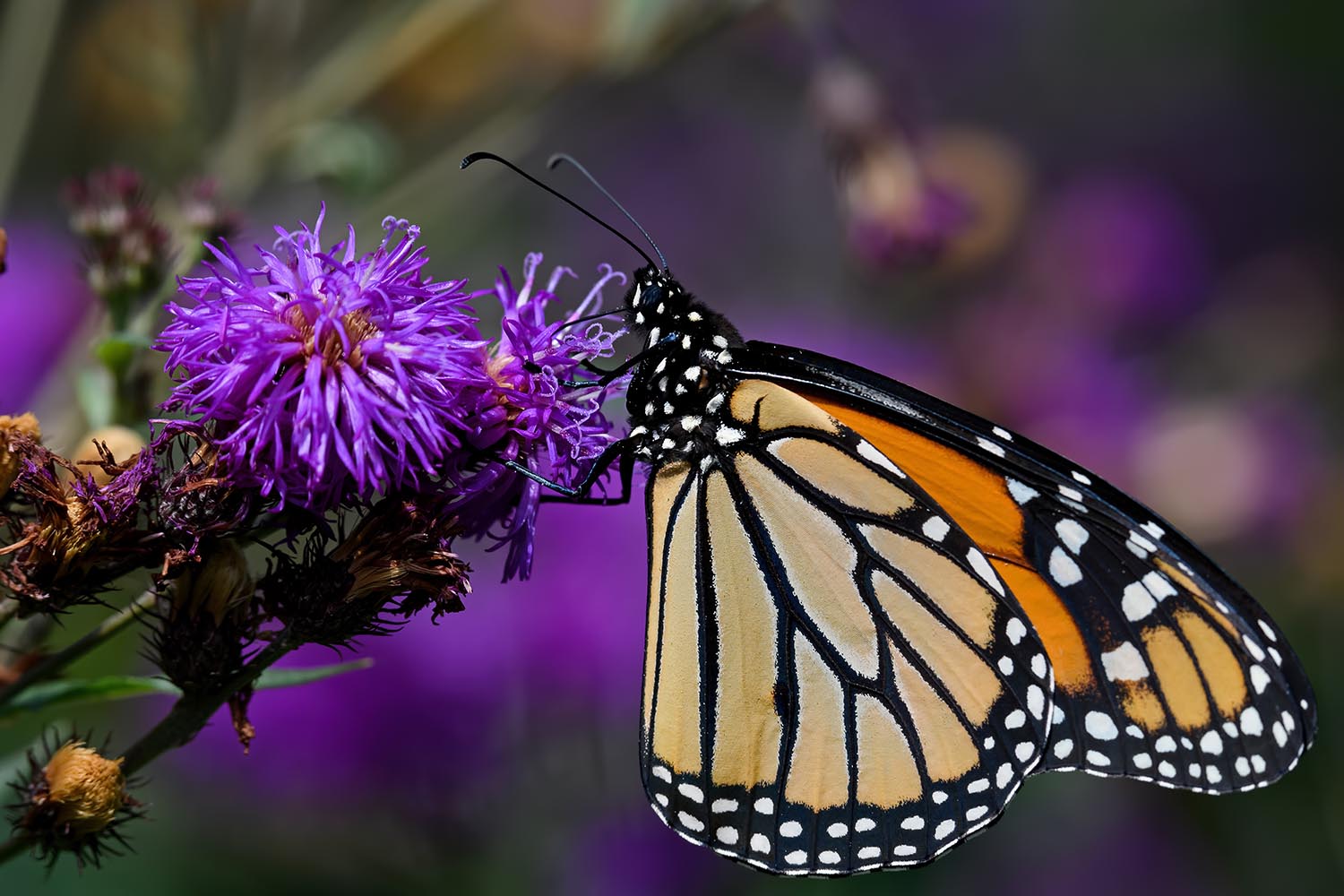By MIKE RALEY WPTF Weekend Gardener
We all want resilient plants for our landscape. Frankly we want something that is cost effective. A plant which fulfills that description and expectation is “Ironweed” (Vernonia noveboracensis). This seems to be the most common variety grown in North Carolina. Anne Clapp used to say: “A weed is a plant you don’t want in your yard,” but you definitely will want Ironweed! It is a popular and hardy herbaceous perennial that you’ll find in a lot of landscapes in North Carolina. Herbaceous means it does not have a woody stem and dies back to the ground after it flowers. By the way, “Ironweed” was named for the English botanist William Vernon who traveled extensively in the late 1600’s and early 1700’s.
Several native flowers I have written about in past articles are members of the largest plant family, the “Aster” family due to their flower structure which is made up of many small flowers or a cluster that appear to be a single bloom. Ironwood is another plant that belongs in this family. “Ironweed” is known to have tough sturdy stems which comes in handy for a flower that grows to a height of 6 to 8 feet.
“Ironweed” is found all over the “Tar Heel” state growing under various environmental conditions. They can grow in most any type of soil from sandy to clay to loamy. Loamy means it’s a perfect soil mix with all the nutrients and just the right pH which is on the acid side. Wherever you plant “Ironweed,” it will truly grow best in well-drained yet moist to wet soil. It just doesn’t want to sit in water all the time. I mean, who does! It prefers full sun to part shade for ideal growth. Ironweed actually grows along roadsides, near streams in pastures throughout the United States and Canada. However, it will look great in your yard because of the extraordinary flowers, clusters of deep purple. There are some striking specimens on my daily walking route where a neighbor has created a nature habitat that virtually covers most of the property surrounding their house. “Ironweed” blooms seem to last and last, at least through mid- summer into mid-fall. While it has an aggressive growth habit that can easily be controlled by dead-heading the flowers, “Ironweed” is not considered to be an invasive plant.
More and more people are planting pollinator gardens and “Ironweed” fits in there. Its flowers produce abundant nectar for bees of all kinds, butterflies and hummingbirds. Some varieties act as a host plant for some species of butterflies and the stems can support bees for nesting habitats. Cut these plants at the end of the growing season. Migrating birds enjoy a stop for a meal of “Ironweed” seeds produced at the end of the growing season.
In addition to Veronica noveboracensis there are a few other varieties to consider. “Veronica gigabytes” (larger flower heads than the standard for central North Carolina and usually found in the mountains), “Veronica angustifolia” also known as “Sandhills Ironweed,” “Vernonia glaucoma,” “Veronica lettermannii” and “Vernonia fasciculata.”
This is one sturdy plant that does not seem to be afflicted by insect or disease problems.
The Ironweed was selected as the 2004 NC Wildflower of the Year, which is a program managed by my friends at the North Carolina Botanical Gardens. I would say that is quite an endorsement. I’m sold!
